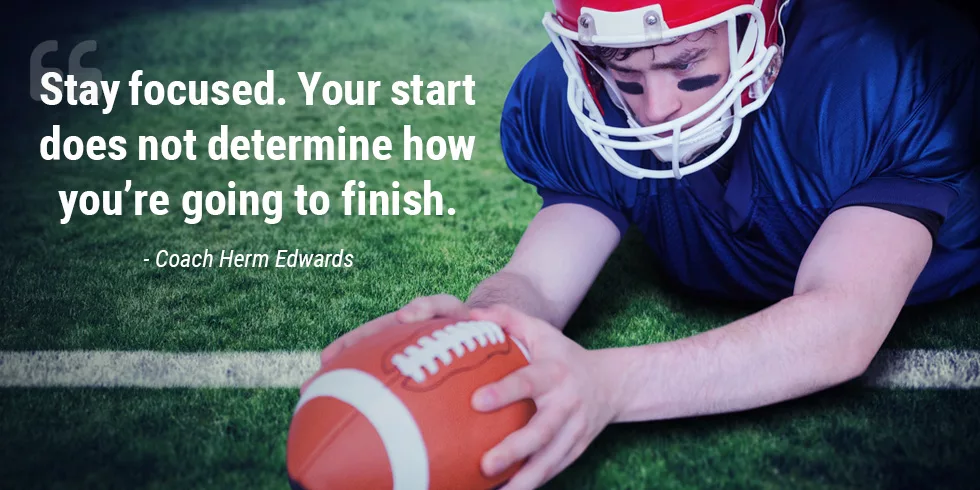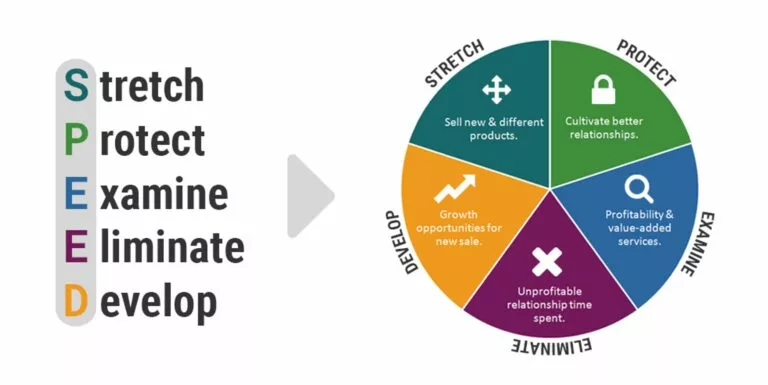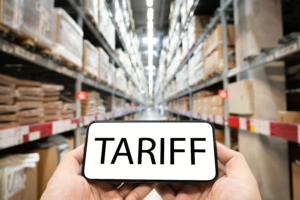
Famed NFL Head Coach Herm Edwards said, “Stay focused. Your start does not determine how you’re going to finish.”
The play starts when the center snaps the ball. Pass receivers run down the field using different patterns: a wide receiver might run towards the middle of the field while another might run straight towards the end zone. The quarterback is challenged with options to make a quick assessment of the receivers and throw the pass that is believed to represent the greatest chance of completion.
The point is that the play’s finish is not predetermined at the start. The receiver cannot be certain that the quarterback will be able to throw the ball – much less that it will result in a catch. All that each individual player can do is their best; but the players are united in their collective effort to achieve the best possible outcome for the team.
“Stay Focused”

I believe that Coach Edwards’ perspectives on football can be applied to how business people think about sales in the wholesale/distribution industry. Just like the team on offense has gained nothing until it executes the play successfully, each business day starts off with zero sales in the ledger. It’s up to your sales team – from the individual salespeople in the field and in the office as well as everyone who supports them – to stay focused. You need to be determined that starting with zero does not mean ending with zero!
In 2009, the Council for Research on Distributor Best Practices (CRDBP) was formed to research how companies might grow more sustainable, profitable businesses. The CRDBP represented a partnership between the National Association of Wholesaler-Distributors (NAW) and Texas A&M’s Industrial Distribution Program.
A major output from the CRDBP’s research was Customer Stratification, a methodology for assessing the profitability of a company’s customer relationships. Customer Stratification leverages the company’s enterprise resource planning (ERP) system to analyze each customer’s buying power, cost to serve, loyalty and margins. Based on this analysis, Customer Stratification categorizes customers into four groups: Core, Opportunistic, Marginal, and Service Drain.

“Your start does not determine how you’re going to finish”
How you’re going to finish in sales is no more predetermined than it is for the quarterback who wants to throw the ball downfield to a teammate. Yes, you know from the Customer Stratification analysis that not all customers are the same – but unless you can pass actionable data to the people who can complete the sale, you’re not going to finish strong.

To be clear: Customer Stratification should not be confused with Business Intelligence (BI), a popular technology for data analysis and reporting. However, BI alone is insufficient. BI is not capable of producing the Action Based Analytics (ABA) you need to plan and execute customer-focused sales strategies and significantly grow your business.
Think of Customer Stratification as a playbook that includes everything from top-level game day strategies to the individual plays designed to get the ball across the goal line. For example, Customer Stratification can provide insights that help sales managers plan for the opportunities available within their respective sales territories. Customer Stratification can also feed your sales people with best-fit scenarios that enable more constructive and profitable customer engagements. (On that point, it’s important that your Customer Stratification solution is capable of delivering actionable information directly to your sales people’s mobile devices so they can capture opportunities in the timeliest manner possible.)
When acting on your Customer Stratification data, it’s helpful to use the SPEED framework: Stretch, Protect, Examine, Eliminate, Develop. SPEED, as defined by the CRDBP, can be used to implement specific actions that best suit the needs of your customers. SPEED strategies align with the Customer Stratification type to suggest ways that you can deepen the customer relationship.

As you might imagine, Customer Stratification often serves as a catalyst for collaborative discussion across your sales organization. I’ve seen the positive ripple effects created when an individual salesperson shares his/her sales success in an online forum. As others on the sales team seek to emulate the successful salesperson’s best practices, access to an online discussion board for follow-up questions, feedback and encouragement can be very useful.
In football terminology, you want to see what the receiver who caught a winning, last-second touchdown pass did right so that others on the team can do the same. As Coach Edwards suggested, it’s how you finish that matters!






